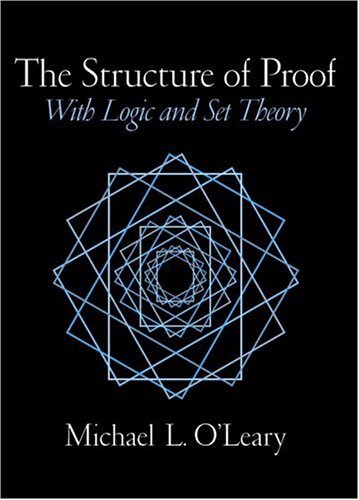Items related to The Structure of Proof: With Logic and Set Theory

Synopsis
Rather than teach mathematics and the structure of proofs simultaneously, this book first introduces logic as the foundation of proofs and then demonstrates how logic applies to mathematical topics. This method ensures that the reader gains a firm understanding of how logic interacts with mathematics and empowers them to solve more complex problems. Topics include: Propositional Logic; Predicates and Proofs; Set Theory; Mathematical Induction; Number Theory; Relations and Functions; Ring Theory; Topology.
"synopsis" may belong to another edition of this title.
From the Back Cover
Rather than teach mathematics and the structure of proofs simultaneously, this book first introduces logic as the foundation of proofs and then demonstrates how logic applies to mathematical topics. This method ensures that the reader gains a firm understanding of how logic interacts with mathematics and empowers them to solve more complex problems. Topics include: Propositional Logic; Predicates and Proofs; Set Theory; Mathematical Induction; Number Theory; Relations and Functions; Ring Theory; Topology.
"About this title" may belong to another edition of this title.
FREE shipping within U.S.A.
Destination, rates & speedsSearch results for The Structure of Proof: With Logic and Set Theory
The Structure of Proof: With Logic and Set Theory
Seller: SecondSale, Montgomery, IL, U.S.A.
Condition: Acceptable. Item in acceptable condition! Textbooks may not include supplemental items i.e. CDs, access codes etc. Seller Inventory # 00090750082
Quantity: 1 available
The Structure of Proof: With Logic and Set Theory
Seller: Goodwill of Greater Milwaukee and Chicago, Racine, WI, U.S.A.
Condition: good. Book is considered to be in good or better condition. The actual cover image may not match the stock photo. Hard cover books may show signs of wear on the spine, cover or dust jacket. Paperback book may show signs of wear on spine or cover as well as having a slight bend, curve or creasing to it. Book should have minimal to no writing inside and no highlighting. Pages should be free of tears or creasing. Stickers should not be present on cover or elsewhere, and any CD or DVD expected with the book is included. Book is not a former library copy. Seller Inventory # SEWV.0130190772.G
Quantity: 1 available
The Structure of Proof: With Logic and Set Theory
Seller: Toscana Books, AUSTIN, TX, U.S.A.
Hardcover. Condition: new. Excellent Condition.Excels in customer satisfaction, prompt replies, and quality checks. Seller Inventory # Scanned0130190772
Quantity: 1 available
